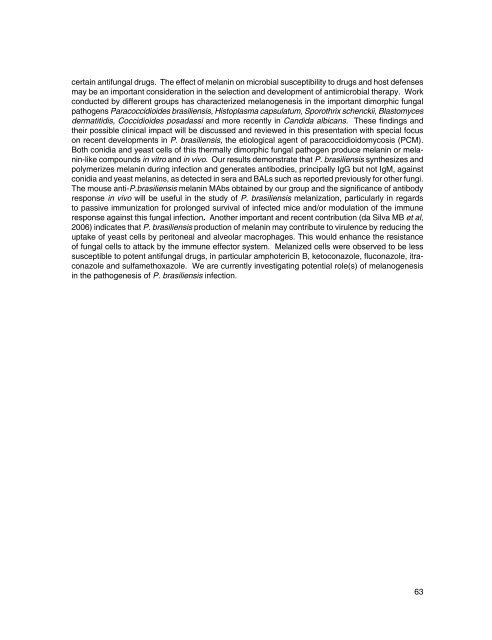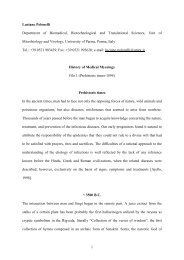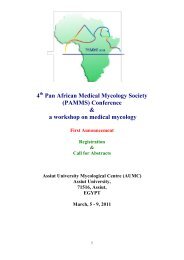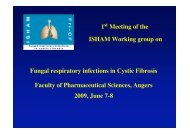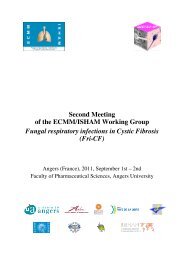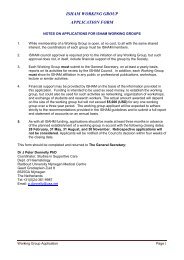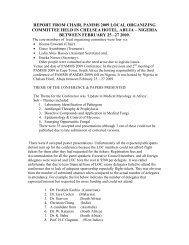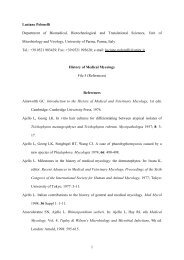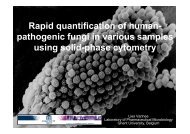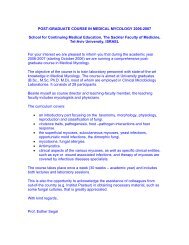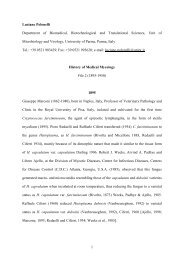Among the secreted factors, we were able to find phospholipase and urease orthologs in P. brasiliensistranscriptome. With respect to the enzymes involved in the intracellular survival of P. brasiliensis,orthologs to superoxide dismutase, thiol peroxidase, and an alternative oxidase, were also found.Recently, by using cDNA microarray technology, we evaluated the early transcriptional responseof this fungus to the environment of peritoneal murine macrophages, in order to shed light on themechanisms used by P. brasiliensis to survive within phagocytic cells. The most significantly inducedgene, sod3, encodes for a putative Cu,Zn SOD, which is an enzyme involved in the elimination ofsuperoxide anions. In this context, the upregulation of sod3 expression in internalized P. brasiliensis,as well as after in vitro menadione treatment, provide evidences that sod3 may be needed for theelimination of exogenously and endogenously generated superoxides. Overall, these data reveal atranscriptional plasticity of P. brasiliensis in response to the harsh environment of macrophages, whichmay contribute to the adaptation and consequent survival of this pathogen within these cells.Collectively, our results suggest that P. brasiliensis possesses a vast arsenal of putative virulencegenes allowing its survival in the different host environments.Another important issue related to virulent fungi is the increased incidence of systemic mycosesin healthy and in immunocompromised individuals. Since the treatment of those infections is stillhampered by the high costs, drug side effects and the development of resistant fungal strains, thediscovery of new treatment approaches is of prime relevance.Recent data of the literature reveal that farnesol, one of the quorum sensing molecules of Candidaalbicans, acts as an antagonistic molecule inhibiting growth and virulence of bacteria and fungi. Inthis sense, our group has performed experiments assessing the effects of farnesol on P. brasiliensisgrowth and morphogenesis. This isoprenoid, also present in many essential oils, was able to inhibit P.brasiliensis growth and, when employing concentrations that do not compromise cell growth, it alsoaffected the P. brasiliensis dimorphic transition. Despite of the remaining of intact cell wall, and theunaffected cell permeability, P. brasiliensis cells treated with farnesol exhibited a fully cytoplasmic degeneration,as reveled by electron microscopy. No synergistic effect between farnesol and fluconazolewas observed. Although our data clearly demonstrated the in vitro antimicrobial activity of farnesolagainst P. brasiliensis, additional studies involving animal models of experimental paracoccidioidomycosisneed to be performed to assess its potential use as an adjuvant therapeutic agent.Role of melanin in certain dimorphic fungiBeatriz L. Gómez 1* , Marta E. Uran 2 , R. Morris-Jones 3 , Luz E. Cano 2 , AngelaRestrepo 2 , Arturo Casadevall 4 , Frank Odds 5 , Christopher Kibbler 1 ,and Joshua D. Nosanchuk 41University College London, 2 Corporación para Investigaciones Biológicas, Medellín, Colombia,3King’s College London, 4 Albert Einstein College of Medicine, NY, 5 University of Aberdeen, UK.*Current address: Mycotic Diseases Branch, Centers for Disease Control and Prevention, Atlanta. GA USA,e-mail: bgomez@cdc.govMelanin pigments are enigmatic compounds produced by organisms in all biological kingdoms,including a wide variety of pathogenic fungi, bacteria, and helminths. Melanin synthesis has beenassociated with virulence for a variety of pathogenic microbes and, in the last 10 years, increasingattention has been directed to the study of melanization in human pathogenic fungi. For somemicrobes melanin appears to contribute to virulence by reducing their susceptibility to host defensemechanisms and by altering host immune responses. Microbial melanization can interfere with theactivity of antimicrobial drugs in vitro, and may potentially result in clinical resistance, particularly to62
certain antifungal drugs. The effect of melanin on microbial susceptibility to drugs and host defensesmay be an important consideration in the selection and development of antimicrobial therapy. Workconducted by different groups has characterized melanogenesis in the important dimorphic fungalpathogens Paracoccidioides brasiliensis, Histoplasma capsulatum, Sporothrix schenckii, Blastomycesdermatitidis, Coccidioides posadassi and more recently in Candida albicans. These findings andtheir possible clinical impact will be discussed and reviewed in this presentation with special focuson recent developments in P. brasiliensis, the etiological agent of paracoccidioidomycosis (PCM).Both conidia and yeast cells of this thermally dimorphic fungal pathogen produce melanin or melanin-likecompounds in vitro and in vivo. Our results demonstrate that P. brasiliensis synthesizes andpolymerizes melanin during infection and generates antibodies, principally IgG but not IgM, againstconidia and yeast melanins, as detected in sera and BALs such as reported previously for other fungi.The mouse anti-P.brasiliensis melanin MAbs obtained by our group and the significance of antibodyresponse in vivo will be useful in the study of P. brasiliensis melanization, particularly in regardsto passive immunization for prolonged survival of infected mice and/or modulation of the immuneresponse against this fungal infection. Another important and recent contribution (da Silva MB et al,2006) indicates that P. brasiliensis production of melanin may contribute to virulence by reducing theuptake of yeast cells by peritoneal and alveolar macrophages. This would enhance the resistanceof fungal cells to attack by the immune effector system. Melanized cells were observed to be lesssusceptible to potent antifungal drugs, in particular amphotericin B, ketoconazole, fluconazole, itraconazoleand sulfamethoxazole. We are currently investigating potential role(s) of melanogenesisin the pathogenesis of P. brasiliensis infection.63


